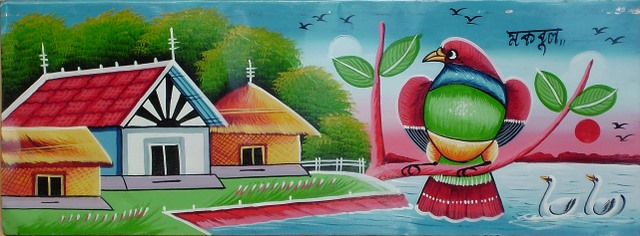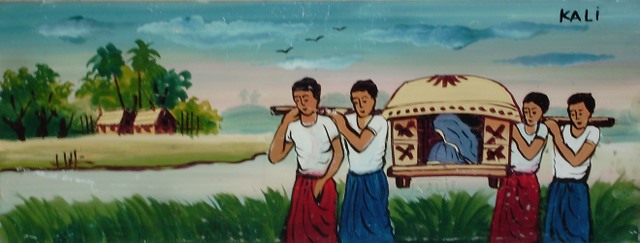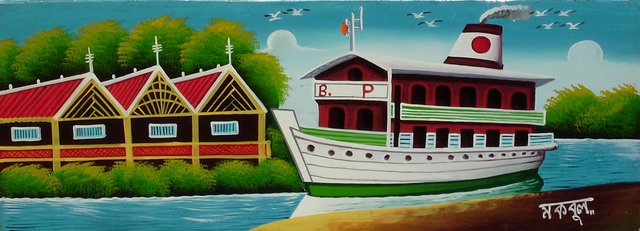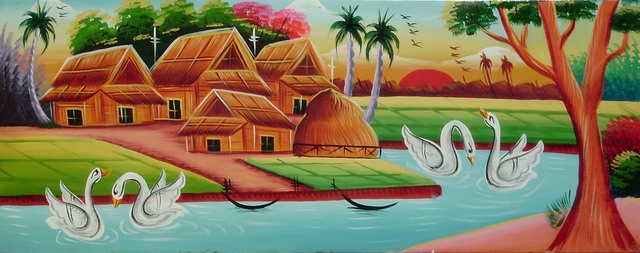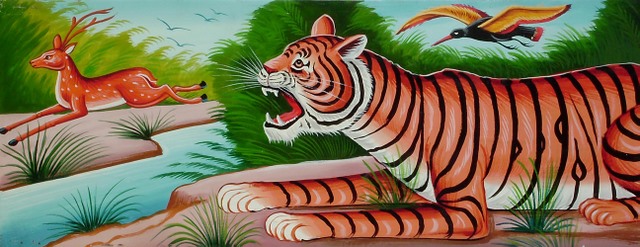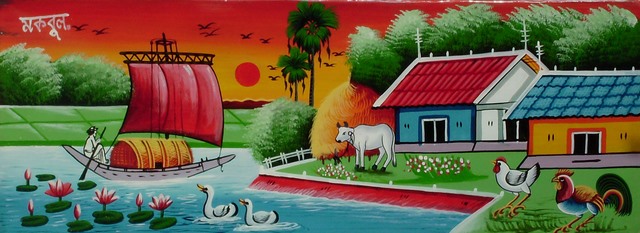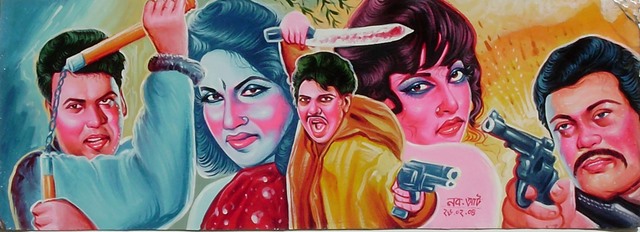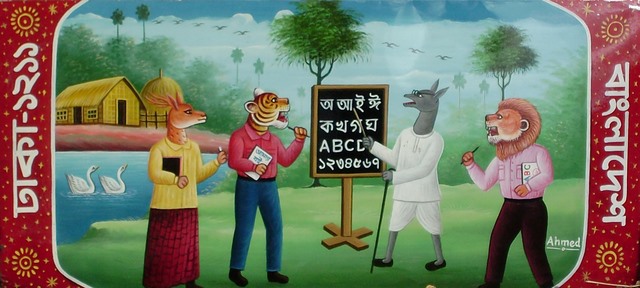Moving Pictures: The rickshaw art of Bangladesh
Beautifully painted and brilliantly decorated, rickshaws are indeed one of the defining features of Dhaka
Another interest Kuntala and David had in common was the paintings on the rickshaws of Bangladesh – ‘rickshaw art’ as it is often called. Together, they had written a book titled “Moving Pictures: The rickshaw art of Bangladesh” published in 2010 by Mapin Publishing House Pvt Ltd, Ahmedabad, India.
About the book
Beautifully painted and brilliantly decorated, rickshaws are indeed one of the defining features of Dhaka; turning the ‘City of Mosques’ into a ‘city of rickshaws’. Whilst to many elite Bangladeshis, rickshaws are ho-hum, seen as the culprits jamming up the roads and slowing down the traffic when the nation wants to move ahead rapidly, for an outsider the gaudily decorated, glittering tri-cycles are fascinating objects of curiosity

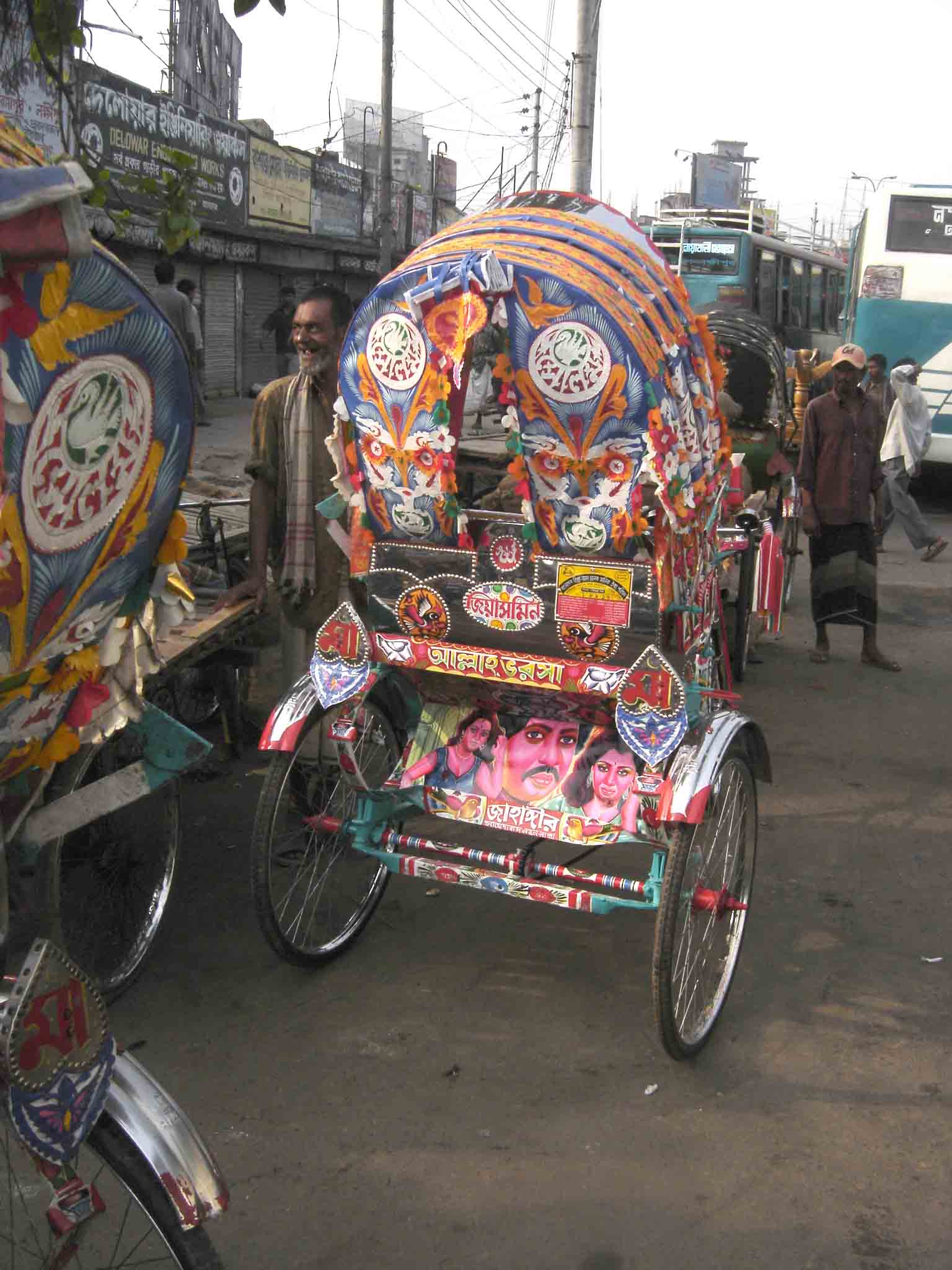
For the two of us, however, looking more closely at the passing rickshaw also represented a deeper engagement with the context that gave rise to this exciting form of subaltern art form and with the many people involved in this trade. We have put our impressions and experiences into a book “Moving Pictures”.
We use the term ‘moving’ in the title of this book is all three possible senses: in a physical, in a metaphorical, and in a figurative sense. Pictures painted on the rickshaws that are never static, always going somewhere or waiting to go, giving us a glimpse of the busy urban folk life. Some of these pictures are rooted in the history or culture, or some represent the desires of the artists, and the fact of the numbers and labour involved moves the heart of the observer. The pictures and their meanings, above all, are fluid and in a flux, always changing along with their contexts.
The book has been published by Mapin Books in 2010. Some feel of the book can be had on this page but if you want to look into it further then click here.
WHAT DOES THE BOOK SAY?
Our joint effort, of which this book is a product, follows a well-defined track of an increasing level of inquiry on rickshaw art. Our prolonged fascination with the art and the artists gradually led to the generation of a legitimate concern in the sociology of the subject as much as its aesthetics.
In this book, we see rickshaw art as one manifestation of a long tradition of art and craft in Bengal as well as one that is rooted in the contemporary, as a subaltern form of art, and finally, as an expression of the artists’ imaginations embedded in their experience of urban life, often as first generation rural immigrants seeking ‘a better life’ in Dhaka or another city. For us, this art is not just an expression of the aspirations of poor people, but reveal a secret inspiration to a thriving creativity and life force. Consequently, we read the art more in its context than document it.
WHY IS OUR WORK DIFFERENT?
Our book differs from its predecessors in its approach to this art and its socio-cultural interpretations and the inclusion of the art on the auto-rickshaws (baby-taxis) which have now disappeared – indeed there are signs of decay and neglect creeping into the rickshaws themselves. The two-stroke ‘baby taxis’ have now been replaced by largely unadorned CNG-fuelled four-stroke machines (‘Chianjees’ as they are now called popularly), resulting in the loss of this particular type of artists’ ‘canvas’ or space of expression. In a few years’ time, the rickshaw art may well become extinct unless it finds yet another ‘space’ of expression.
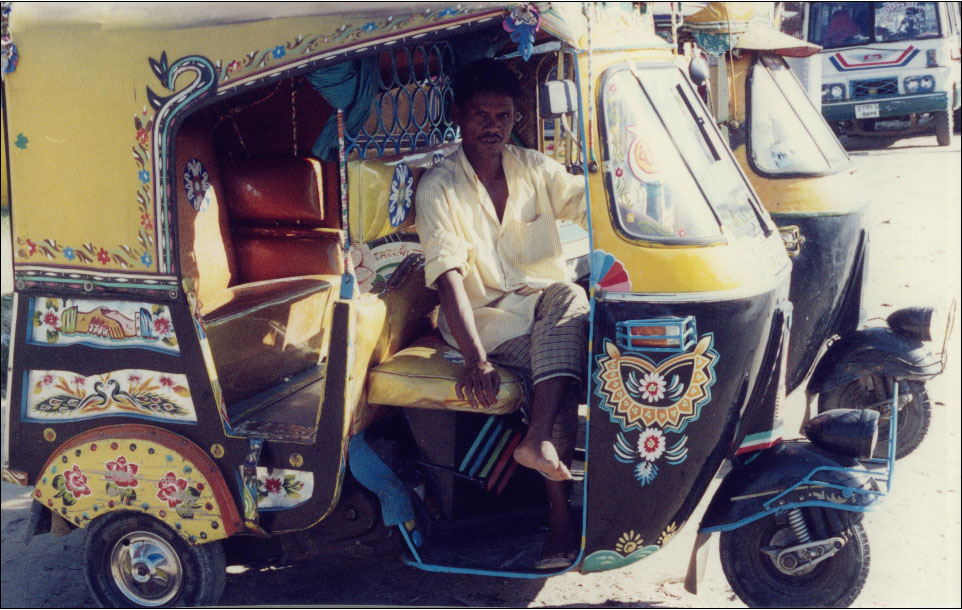
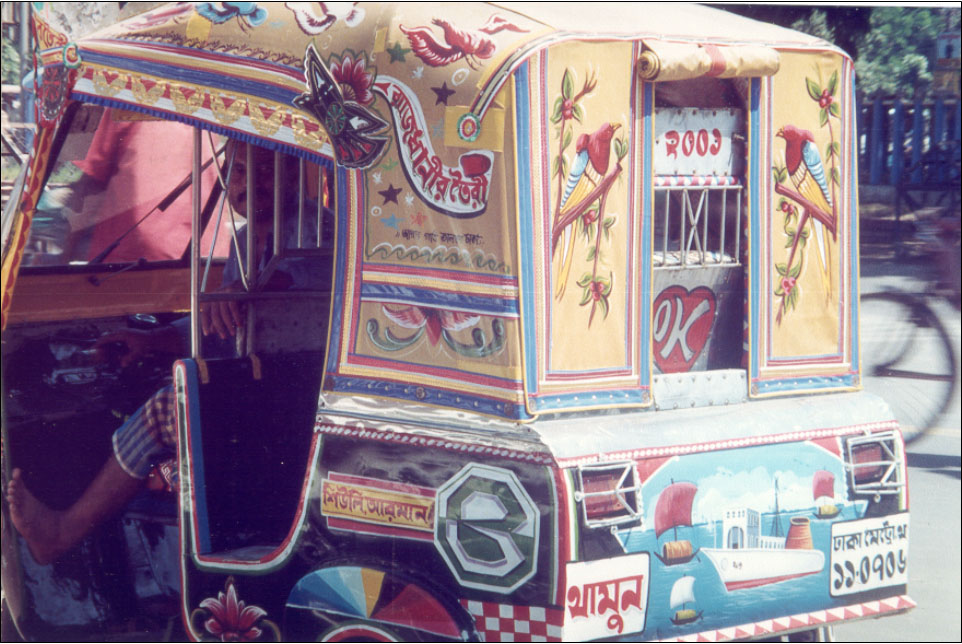
About our publisher
Mapin Publishing House is a well-known art book publisher, reputed for the quality of their productions. For more information about them, see their website here
Rickshaw plates
